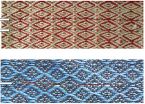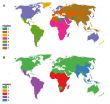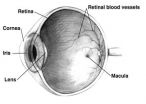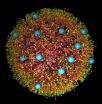Researchers develop clothes that can monitor and transmit biomedical info on wearers
2014-12-03
(Press-News.org) This news release is available in French.
Quebec City, December 3, 2014--Researchers at Université Laval's Faculty of Science and Engineering and Centre for Optics, Photonics and Lasers have developed smart textiles able to monitor and transmit wearers' biomedical information via wireless or cellular networks. This technological breakthrough, described in a recent article in the scientific journal Sensors, clears a path for a host of new developments for people suffering from chronic diseases, elderly people living alone, and even firemen and police officers.
A team under the supervision of Professor Younès Messaddeq created the smart fabric by successfully superimposing multiple layers of copper, polymers, glass, and silver. "The fiber acts as both sensor and antenna. It is durable but malleable, and can be woven with wool or cotton. And signal quality is comparable to commercial antennas," explained Professor Messaddeq, Canada Excellence Research Chair in Photonic Innovations. The surface of the fiber can also be adjusted to monitor a range of information such as glucose levels, heart rhythm, brain activity, movements, and spatial coordinates.
A patent application has already been filed, though certain elements still need to be fine-tuned before the innovation is ready for commercialization. "Of course, the technology will have to be connected to a wireless network, and there is the issue of power supply to be solved," notes Professor Messaddeq. We have tested a number of solutions, and the results are promising. We will also have to make sure the fabric is robust, and can stand up to chemicals found in laundry detergent."
INFORMATION:
In addition to Younès Messaddeq, study authors are Stepan Gorgutsa, Victor Bélanger-Garnier, Jeff Viens, Benoit Gosselin, and Sophie LaRochelle, of Université Laval, and Bora Ung of Montreal's École de technologie supérieure.
Information
Jeff Viens, PhD
Centre for Optics, Photonics and Lasers
Université Laval
418-656-2131 ext. 3711
jfviens@copl.ulaval.ca
[Attachments] See images for this press release:

ELSE PRESS RELEASES FROM THIS DATE:
2014-12-03
Researchers at North Carolina State University have for the first time mapped human disease-causing pathogens, dividing the world into a number of regions where similar diseases occur.
The findings show that the world can be separated into seven regions for vectored human diseases - diseases that are spread by pests, like mosquito-borne malaria - and five regions for non-vectored diseases, like cholera.
Interestingly, not all of the regions are contiguous. The British Isles and many of its former colonies, such as the United States and Australia, have similar diseases ...
2014-12-03
Good news on the panda front: Turns out they're not quite as delicate - and picky - as thought.
Up until now, information gleaned from 30 years worth of scientific literature suggested that pandas were inflexible about habitat. Those conclusions morphed into conventional wisdom and thus have guided policy in China. But a Michigan State University (MSU) research associate has led a deep dive into aggregate data and emerged with evidence that the endangered animal is more resilient and flexible than previously believed.
Vanessa Hull is a postdoctoral research associate ...
2014-12-03
Irvine, Calif., Dec. 3, 2014 - High fecal counts frequently detected at so-called "baby beaches" may not be diaper-related. UC Irvine researchers found that during summer months, small drainpipes emptying into enclosed ocean bays have a disproportionate impact on calmer waters. The findings were published Tuesday in the journal Environmental Science & Technology.
Researchers have long known that creeks and tributaries foul coastal waters with major winter storm runoff. But dry seasons like the one that just concluded can spell potential peril, too. Runoff from watering ...
2014-12-03
When it comes to getting out of a tricky situation, we humans have an evolutionary edge over other primates. Take, as a dramatic example, the Apollo 13 voyage in which engineers, against all odds, improvised a chemical filter on a lunar module to prevent carbon dioxide buildup from killing the crew.
UC Berkeley scientists have found mounting brain evidence that helps explain how humans have excelled at "relational reasoning," a cognitive skill in which we discern patterns and relationships to make sense of seemingly unrelated information, such as solving problems in unfamiliar ...
2014-12-03
Scientists have developed a new light-sensitive film that could one day form the basis of a prosthetic retina to help people suffering from retinal damage or degeneration. Hebrew University of Jerusalem researchers collaborated with colleagues from Tel Aviv University and Newcastle University in the research, which was published in the journal Nano Letters.
The retina is a thin layer of tissue at the inner surface of the eye. Composed of light-sensitive nerve cells, it converts images to electrical impulses and sends them to the brain. Damage to the retina from macular ...
2014-12-03
A new research brief from the US2010 Project probes the status of minorities in American suburbs. Suburbs in 2010 were as racially and ethnically diverse as were central cities in 1980, and that diversity is still increasing. Yet minorities are not finding equal access to the American dream in the suburbs where they live, a lesson illustrated recently by Ferguson, MO.
Suburbia has always been less segregated than central cities. Segregation is slowly declining between suburban blacks and whites, but has stayed about the same for Hispanics and Asians over three decades. ...
2014-12-03
Do you consider yourself a conscientious person? Then sign up for a fixed-rate mortgage. Neurotic? You'll probably opt for home ownership over renting.
According to a new study published in the Journal of Behavioral and Experimental Economics, personality traits are strong indicators of real-estate decisions. The research, by Dr. Danny Ben-Shahar of Tel Aviv University's Faculty of Management and doctoral candidate Roni Golan of the Technion Institute of Technology, finds a correlation between personality and individual real estate choices, and a follow-up study by the ...
2014-12-03
Those wishing to prove themselves as "doers" must not only be hands-on and demonstrate proactive behavior but also have social acumen and a feel for favorable opportunities. Those who rely on personal initiative alone will quickly be standing there as an isolated troublemaker. This is what psychologists from the University of Bonn and their colleagues from Florida State University (USA) have discovered through surveying a variety of occupational categories. The results have been published online in the renowned "Journal of Management". The printed version will be published ...
2014-12-03
Learning from others and innovation have undoubtedly helped advance civilization. But these behaviours can carry costs as well as benefits. And a new study by an international team of evolutionary biologists sheds light on how one particular cost - increased exposure to parasites - may affect cultural evolution in non-human primates.
The results, published Dec. 3, 2014, in the journal Proceedings of the Royal Society B, suggest that species with members that learn from others suffer from a wider variety of socially transmitted parasites, while innovative, exploratory ...
2014-12-03
This news release is available in German.
(Jena/Germany) Jena scientists have been successful in producing highly specific nanoparticles. Depending on the bound dye the particles are guided to the liver or to the kidney and deliver their payload of active ingredients directly to the targeted tissue. Moreover, the dyes enable the tracking of the transport processes by intravital microscopy or, in a non-invasive way, by multi spectral optoacoustic tomography. The reduction of cholesterol production induced by siRNA served as the proof-of-principle for the developed ...
LAST 30 PRESS RELEASES:
[Press-News.org] Researchers develop clothes that can monitor and transmit biomedical info on wearers




